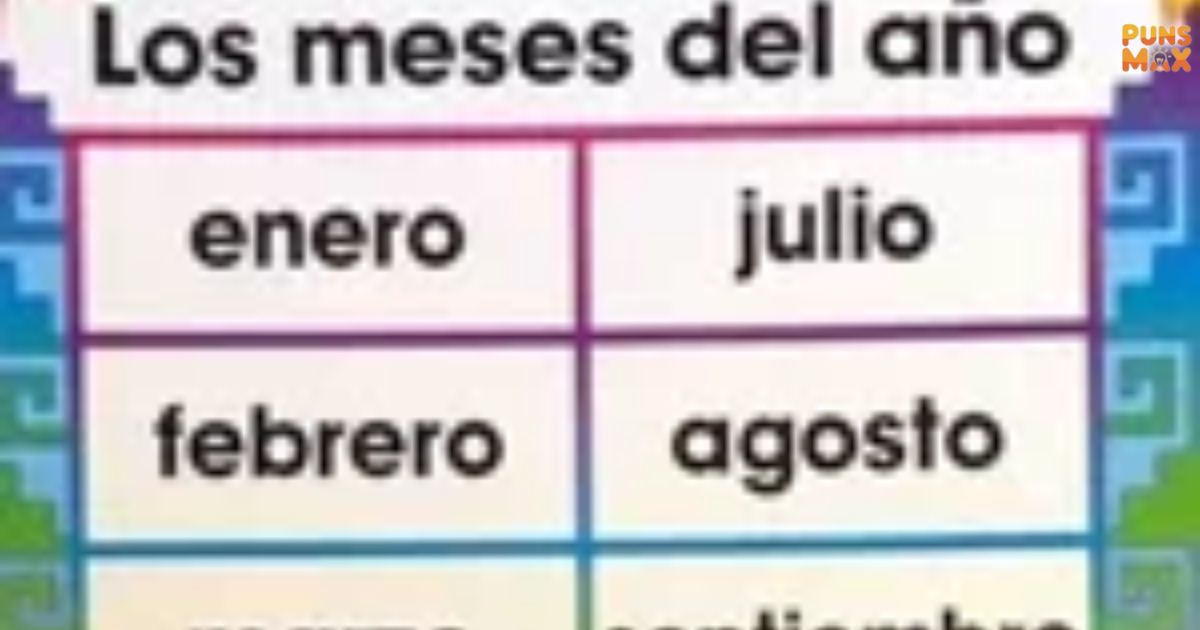Do you want to speak Spanish confidently and sound like a native when talking about dates, birthdays, or holidays? Learning the months in Spanish is the first step! At first, they may seem tricky, but once you know the months, you’ll be able to use them in everyday conversations, plan trips, or even impress your Spanish-speaking friends.
In this article, we’ll break down all 12 months in Spanish in order, show you the correct pronunciation, and give easy memory tips so you never forget them. Plus, we’ll include simple phrases and examples with the months of the year in Spanish that make learning fun and practical. Stick around, and by the end, you’ll master the Spanish months of the year effortlessly.
Introduction to Spanish Months
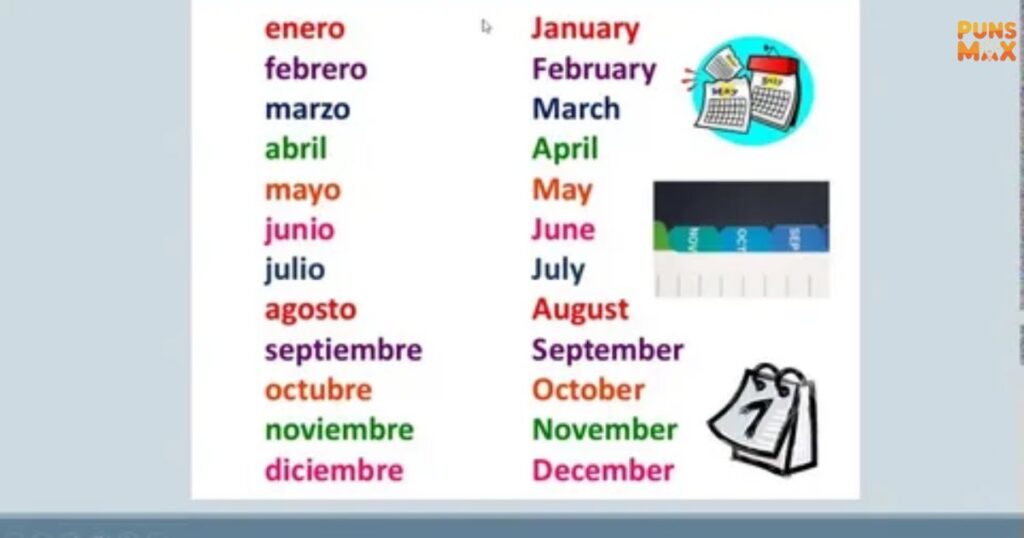
- January starts new hopes, enero brings fresh beginnings after winter’s deep, cold slumber.
- February, febrero, flirts with love; hearts bloom even in winter’s chill.
- March, marzo, marches in flowers, springtime whispers softly across the land.
- Spanish months carry rhythm; each one sings stories of time and tradition.
- Learning months opens doors; calendario español makes planning simple, delightful, and fun.
- Months reflect seasons; knowing them paints vivid imagery of life’s flowing cycles.
- Pronunciation guides help months leap off the page into real conversations easily.
- Spanish months feel alive, echoing history, holidays, and heartfelt celebrations worldwide.
- From enero to diciembre, each month offers flavor, sound, and cultural spice.
- Months organize life; memorizing them unlocks language confidence in chats and writing.
- Spanish months sound musical; syllables dance on your tongue gracefully each time.
- Familiarity with months creates smooth dialogue with locals during trips or festivals.
- Months mark growth, change, and tradition in Spanish-speaking countries’ vibrant culture.
- Learning them brings rhythm; Spanish timekeeping feels like poetry every day.
- Months carry stories; each word preserves centuries of Spanish language and heritage.
- Practice makes pronunciation precise; every month spoken fluently boosts conversational ease.
- Spanish months guide plans; from fiestas to siestas, they structure joyful life perfectly.
Read More: 190+Ear Piercing Chart – Visual Guide to Every Type of Ear Piercing
January to March in Spanish
- Enero awakens hope; cold outside, warm hearts beat inside, ready for change.
- Febrero invites love; hearts skip beats like flamenco dancers under moonlight.
- Marzo marches in, blooming flowers chase winter’s shadows away from streets.
- Winter ends; spring whispers softly, marzo blooms, reminding life always moves forward.
- Enero’s chilly mornings feel cozy with hot chocolate and sweet conversation.
- Febrero lovers plan secretly, sharing smiles and whispered promises under Spanish skies.
- Marzo breeze carries scent of flowers, excitement of new adventures emerging slowly.
- Enero resolutions fade, but fresh enthusiasm persists through February’s chilly days.
- Febrero’s short length surprises; love still lingers longer than calendar numbers suggest.
- Marzo celebrates rebirth; nature paints landscapes with greens, yellows, and pink blooms.
- Winter jackets hang away, marzo invites lighter clothes and brighter outlooks.
- Enero beginnings teach patience; growth takes time, month by month, day by day.
- February sweetness lingers; small gestures warm hearts during short, cold month nights.
- Marzo mornings feel longer, sun stretches shadows across streets and open plazas.
- Enero quiet streets hum stories of winter and family memories retained softly.
- Febrero invites chocolate, love notes, and gentle laughter shared under starry skies.
- Marzo awakens nature; flowers, birds, and Spanish chatter fill the vibrant streets.
April to June in Spanish
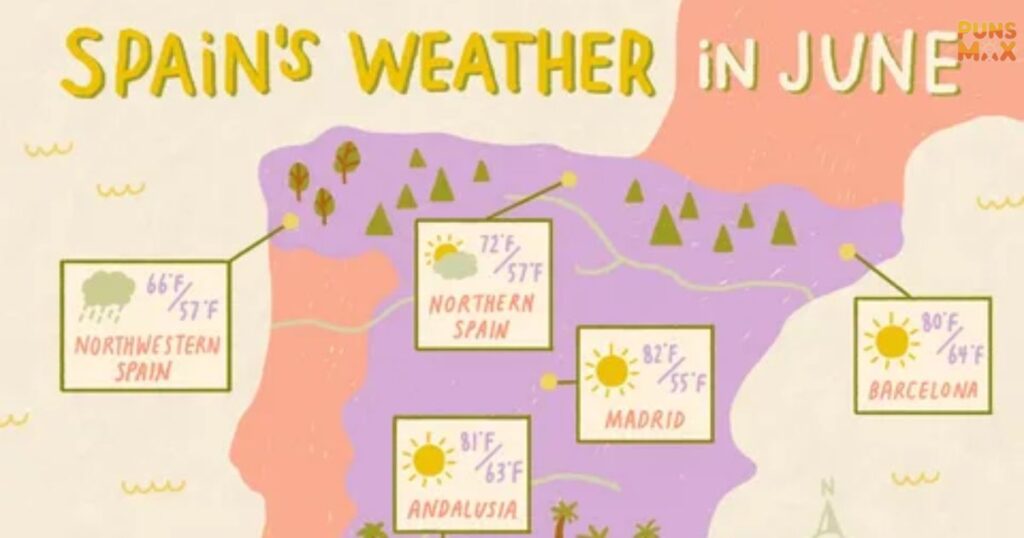
- Abril rains softly; streets glisten while children splash puddles laughing loudly nearby.
- Mayo blooms with warmth; flowers and festivals create joyful neighborhood celebrations.
- Junior sun shines bright; summer whispers promises of long days, fun adventures.
- April showers cleanse; nature dances in rhythm with raindrops on windowpanes.
- Mayo gardens flourish; hands in soil, hearts in bloom, happiness grows naturally.
- Junior heat invites picnics, laughter, and late evening strolls across cobblestones.
- April breezes carry scents of earth after gentle spring rainfalls.
- Mayo mornings glow golden; birds chirp serenades to wake sleepy neighborhoods peacefully.
- Junior evenings linger; sunset paints skies in colors Spanish poets adore deeply.
- Abril flowers nod; each petal whispers spring’s soft, inviting, colorful secrets.
- Mayo markets brim with fruit, music, and chatter in sunny plazas.
- Junior festivals awaken streets; dancing, music, and laughter overflow into night.
- Abril teaches patience; every drop of rain nurtures growth unseen but certain.
- Mayo inspires joy; warmth, flowers, and lively conversations fill each afternoon.
- Junior invites adventure; sunlit beaches, mountain trails, and laughter never-ending accompany.
- April evenings smell fresh; rain-soaked earth, cozy cafes, and quiet contemplation mix.
- Mayo smiles bloom; neighbors greet each other warmly under spring’s gentle sunlight.
July to September in Spanish
- Julio suns blaze; beaches fill with laughter, umbrellas, and soft ocean whispers.
- Agosto afternoons slow; siestas bring rest while cicadas hum summer songs loudly.
- Septiembre returns to school; notebooks open, minds eager, learning rhythm resumes naturally.
- Julio fireworks light skies, summer nights crackle with joy and shared stories.
- Agosto festivals shine; streets vibrate with music, dancing, and savory food aromas.
- September winds change; leaves rustle, signaling autumn’s approach across fields and parks.
- Julio ice creams melt; children giggle chasing drips down sticky fingers happily.
- Agosto sunsets linger; golden skies invite reflection and evening strolls through plazas.
- September mornings cool; autumn whispers softly, painting leaves with red, gold, brown.
- Julio swims refresh; waves crash, laughter splashes, sun warms every happy soul.
- August nights glow; lanterns float, music flows, hearts beat joyfully together.
- September harvest begins; markets overflow with fruit, celebrating season’s rich, sweet bounty.
- Julio memories form; long summer days, laughter, friends, and playful adventures remembered.
- Agosto melodies drift; Spanish guitars strum while evenings hum with romance.
- Septiembre reminds change; time moves, seasons shift, life adapts gracefully each year.
- Julio evenings hum; cicadas sing, waves lap, stars twinkle above softly.
- Agosto ends quietly; sunsets farewell summer with gentle warmth before cooler nights.
October to December in Spanish
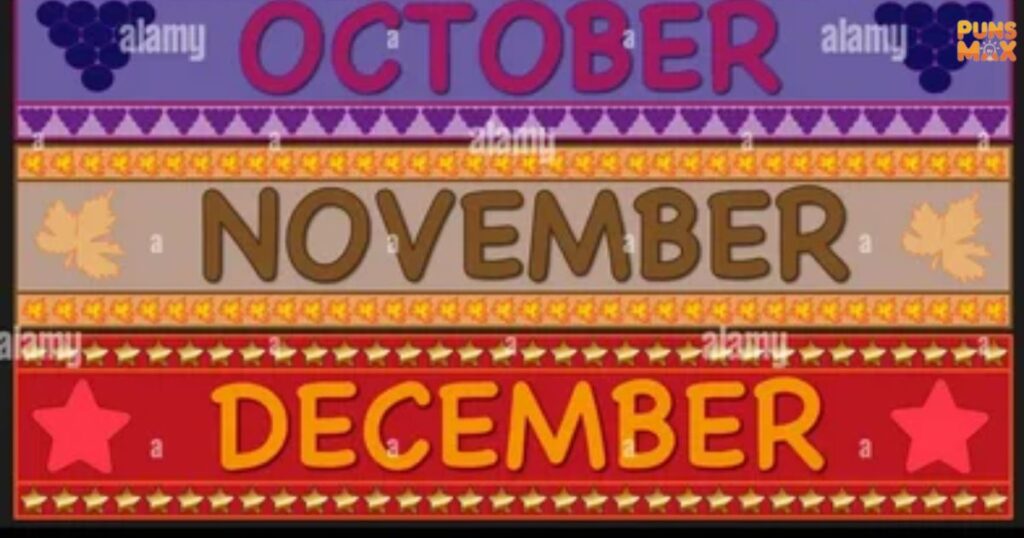
- October leaves fall; colors burst, streets sparkle with autumn’s fiery palette.
- Noviembre rains drizzle; umbrellas dot sidewalks, cozy cafes invite warmth inside.
- Diciembre celebrations glow; lights sparkle, songs echo, hearts warm together always.
- October winds whisper; change arrives softly with crisp mornings and golden afternoons.
- Noviembre reminds gratitude; harvests, family, and memories fill each quiet, reflective day.
- Diciembre invites joy; festive decorations brighten homes, smiles, and laughter multiply happily.
- October sweaters wrap warmth; scarves flutter, leaves crunch, chilly air feels cozy.
- Noviembre nights linger; fires crackle, tea steams, conversations deepen into evening’s calm.
- Diciembre markets dazzle; lights, ornaments, and music create magic for all senses.
- October pumpkin scents drift; baking, kitchens, and warmth fill joyful homes completely.
- Noviembre traditions continue; meals shared, stories told, connections strengthen over time.
- Diciembre anticipation rises; gifts wrapped, songs sung, celebrations span streets and hearts.
- October sunsets glow; amber light filters through leaves, painting gentle silhouettes peacefully.
- Noviembre gratitude spreads; hearts open, friends gather, kindness flows naturally throughout days.
- Diciembre laughter echoes; families unite, music plays, memories captured and cherished forever.
- Octubre quiet moments; reflection, walks, and gentle pauses mark the passing season beautifully.
- Diciembre endings and beginnings; one year closes, another waits with promises and hope.
Read More: 220+Things to Do in Charleston SC – Local Favorites & Must-See Attractions
Pronunciation Tips for Spanish Months
- Roll the ‘r’ softly; months like marzo dance on your tongue smoothly.
- Emphasize vowels clearly; español pronunciation flows easier with sharp, distinct syllables always.
- Listen to native speakers; mimic rhythm to remember months effortlessly, naturally, joyfully.
- Break words in parts; each syllable becomes a melody for easier memory.
- Repeat aloud daily; speaking enero, febrero, improves fluency and confidence quickly.
- Record yourself speaking; compare with native rhythm, intonation, and syllable stress carefully.
- Slow down first; pronunciation improves when clarity precedes speed, then practice fast.
- Sing months in songs; melodies make memory stick longer than rote memorization.
- Use mnemonic devices; link sounds to familiar words or images creatively.
- Pair months with actions; gestures reinforce pronunciation through muscle memory subtly.
- Practice with friends; playful repetition makes learning Spanish months enjoyable and social.
- Write and speak; seeing letters and speaking sounds consolidates memory effectively.
- Focus on tricky letters; ñ, r, and soft vowels require extra attention.
- Connect months to festivals; context aids pronunciation and recall effortlessly each time.
- Record short phrases; repeating enero a diciembre strengthens intonation naturally.
- Visualize words; imagining letters and sounds together enhances memory and fluency.
- Be patient; perfect pronunciation grows gradually, practice daily, confidence builds steadily.
Common Phrases Using Spanish Months
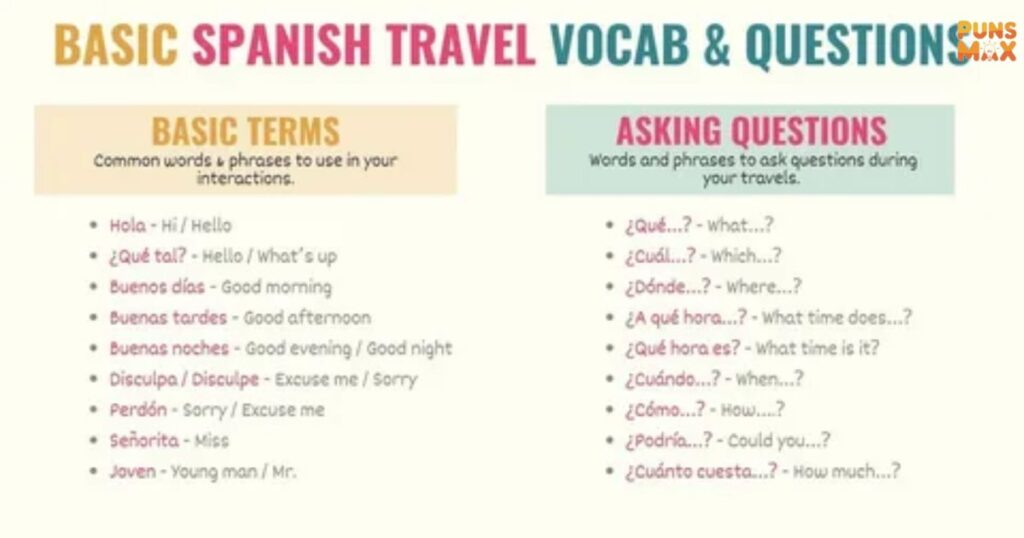
- “Mi cumpleaños es en julio” shares birthday joy clearly and naturally.
- “Vacaciones en agosto” brings excitement about summer trips with friends happily.
- “Reunión en marzo” schedules work, family, or friends’ events efficiently always.
- “Fiesta en diciembre” celebrates holidays with music, food, and laughter universally.
- “Plan para abril” organizes springtime adventures smoothly without confusion or stress.
- “Evento en noviembre” marks important dates for gatherings or community activities joyfully.
- “Cumpleaños en enero” allows sharing birthdays’ significance politely with clear reference.
- “Viaje en mayo” expresses excitement about spring explorations with warmth and energy.
- “Cita en septiembre” arranges appointments or meetings efficiently with proper timing.
- “Celebración en octubre” signals seasonal festivities, costumes, or harvest events perfectly.
- “Cena en febrero” plans romantic or friendly meals thoughtfully with correct month reference.
- “Examen en junio” clarifies important academic dates for planning studies accurately.
- “Reunión familiar en abril” connects months to meaningful gatherings and bonding naturally.
- “Fiesta sorpresa en agosto” adds excitement, ensuring the correct month makes plans succeed.
- “Cumpleaños de amigo en marzo” communicates clearly while strengthening friendships effectively.
- “Viaje de verano en julio” expresses timing, weather, and seasonal fun precisely.
- “Evento cultural en diciembre” highlights holidays, festivals, and traditions with accuracy.
Spanish Months in Festivals and Holidays
- Enero celebrates Reyes Magos, marking the new year with gifts and joy nationwide.
- Febrero hosts Carnaval, colorful costumes, music, dancing fill streets with excitement.
- Marzo welcomes Semana Santa, religious processions combine faith, art, and tradition.
- Abril features Feria de Abril, flamenco, dancing, and fair rides delight locals.
- Mayo holds Labor Day; celebrations honor work, community, and public life respectfully.
- Junio enjoys San Juan, bonfires, music, and midsummer festivities across Spain.
- Julio sparks Fiesta de Santiago, parades, fireworks, and cultural pride shine.
- Agosto embraces La Tomatina, playful chaos with tomatoes fills streets joyfully.
- Septiembre honors harvest festivals; local foods, music, and markets excite visitors.
- Octubre celebrates Día de la Hispanidad with parades, history, and cultural pride.
- Noviembre hosts Día de Todos los Santos; cemeteries honor ancestors respectfully.
- Diciembre bursts with Navidad; lights, songs, and family gatherings warm hearts globally.
- Months frame traditions; festivals follow calendars, connecting culture, people, and heritage beautifully.
- Learning months helps track holidays, events, and celebrations without confusion easily.
- Spanish festivals reflect months’ identity, history, and seasonal rhythm vibrantly each year.
- Months guide planning; traveling, visiting, or participating in events becomes seamless naturally.
- Festivals remind us; months aren’t just numbers but markers of joy and memories.
Spanish Months in Everyday Conversation
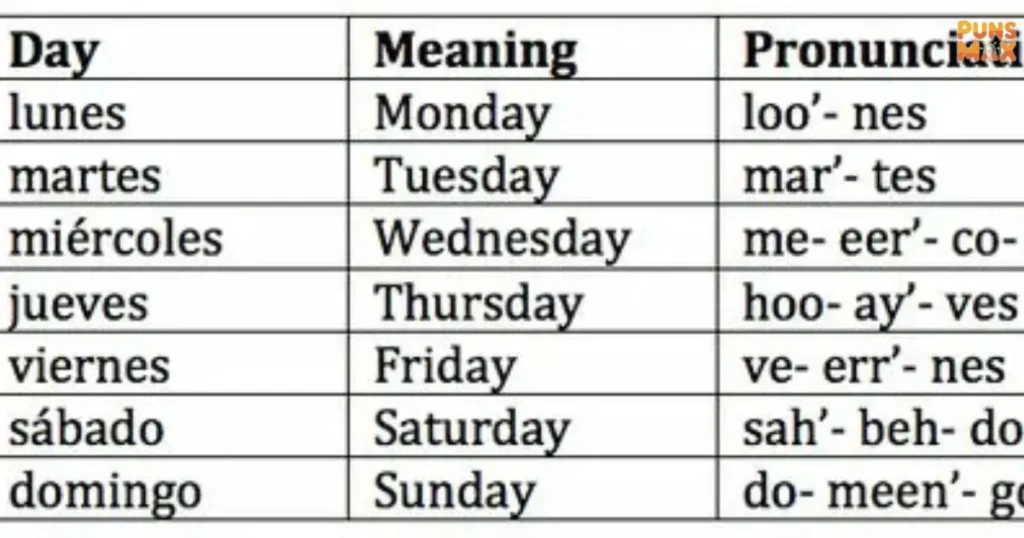
- “Nos vemos en junio” casually arranges meetings or casual hangouts efficiently always.
- “Mi cumpleaños es en abril” shares personal info smoothly in friendly chats.
- “Vacaciones en agosto” sparks travel conversations and excitement naturally among friends.
- “Examen en septiembre” communicates schedules and planning clearly with teachers or colleagues.
- “Fiesta en diciembre” invites conversation about social events with enthusiasm.
- “Evento en mayo” organizes family gatherings, parties, or community activities easily.
- “Cita en marzo” sets appointments, doctor visits, or business meetings politely.
- “Viaje en julio” encourages discussion about summer plans or holiday destinations freely.
- “Reunión familiar en noviembre” ensures clarity in scheduling gatherings and events.
- “Cena en febrero” promotes friendly interactions around shared meals or celebrations.
- “Plan en octubre” discusses projects, seasonal trips, or outdoor activities efficiently.
- “Cumpleaños de amigo en enero” sparks small talk about celebrations and gifts.
- “Clase en abril” helps students or colleagues coordinate learning or training sessions.
- “Fiesta sorpresa en agosto” encourages conversation about surprises or special events joyfully.
- “Vacaciones escolares en junio” opens discussions about family time or trips.
- “Evento cultural en septiembre” promotes knowledge sharing about traditions and art.
- “Cena; familiar en diciembre” strengthens relationships through casual discussion of gatherings.
Read More: 245+Big Mac Sauce Recipe – Simple, Creamy & Perfect for Every Burger
Quick Memory Tips to Remember Spanish Months
- Group months seasonally; spring, summer, autumn, winter help recall them faster easily.
- Sing months aloud; melodies make retention simple and enjoyable for longer periods.
- Use flashcards daily; seeing and saying months strengthens memory effectively over time.
- Link months with birthdays; personal connections aid recall naturally and instantly.
- Visualize calendars; imagining months in color or images reinforces memory creatively.
- Repeat in order; sequence practice helps recall months sequentially without confusion.
- Associate months with festivals; cultural events anchor words in memory vividly.
- Write them daily; writing reinforces spelling, pronunciation, and recognition together efficiently.
- Teach someone else; explaining months solidifies knowledge faster and confidently.
- Use mnemonic phrases; clever sentences make months stick longer in memory.
- Group by syllables; breaking words into parts improves recall easily.
- Say aloud in conversations; practical usage solidifies retention effortlessly.
- Use apps or games; interactive repetition makes learning months fun effectively.
- Practice tongue twisters; months woven into fun phrases enhance pronunciation recall.
- Pair months with weather; seasonal context strengthens memory naturally.
- Listen to songs; hearing months in music creates auditory anchors in brain.
- Stay consistent; daily short practice beats long occasional sessions for retention.
Conclusion
Learning the months in Spanish doesn’t have to be difficult. By breaking them into smaller groups, practicing pronunciation, and using simple phrases in everyday conversation, you can remember all 12 months in Spanish in order quickly and confidently. Whether it’s talking about birthdays, holidays, or travel plans, knowing the months of the year in Spanish will make your Spanish sound natural and fluent.
Remember, the key is practice and repetition. Try using the Spanish months of the year in sentences, link them with seasons or events, and revisit them regularly. Soon, saying Enero, Marzo, or Diciembre will feel as easy as speaking in your native language. With these tips, you’re now ready to use the months in Spanish effortlessly in daily life.

